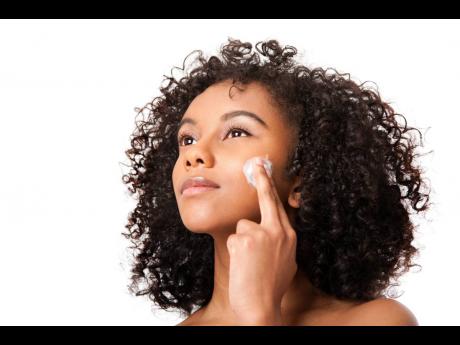Nurturing healthy skin
THE SKIN is the largest organ in the body and covers the body’s entire external surface. It is made up of three layers – the epidermis, dermis, and the hypodermis – all three of which vary significantly in their anatomy and function.
The skin’s structure is made up of an intricate network which serves as the body’s initial barrier against pathogens, UV light, chemicals and mechanical injury. It also regulates temperature and the amount of water released into the environment.
A number of skin conditions can last throughout life. Some may begin in childhood and continue into adulthood. In some cases, the symptoms are not always present but flare up at certain times.
Acne is a common skin concern that can be associated with excess oil, dryness or irritation associated with topical treatments and dark spots, long after blemishes heal.
According to Treacha Reid, cosmetologist and trichologist, these blemishes can lead to physical and emotional distress. Understanding the factors that cause acne is essential for managing the condition and finding effective treatments.
“Several factors contribute to the development of acne, and understanding these causes can help inform treatment options. One of the primary causes is the overproduction of sebum, an oily substance, by the oil glands or sebaceous glands in the skin. Hormonal fluctuations, particularly androgens such as testosterone, also play a significant role in the development of acne,” Reid said.
A consistent skincare routine, she said, is crucial for preventing acne. It should involve cleansing the skin to remove excess oil and dirt, exfoliating to remove dead skin cells, and moisturising with non-comedogenic products that do not clog pores. These steps can help maintain the health of the skin and reduce the likelihood of acne breakouts.
Hyperpigmentation is also a very common condition that is characterised by dark spots or patches of skin that result from increased melanin production, the pigment that provides colour to skin. These spots go by a number of different names, including age spots, sunspots, liver spots, solar lentigines or postinflammatory hyperpigmentation, depending on the cause.
“Treatment can be challenging and focuses on different mechanisms to prevent or hinder melanin production; break down and slough off pigmented cells, enhance skin cell turnover and decrease inflammation,” Reid said.
Eczema
Eczema is a common skin condition that causes itchiness, rashes, dry patches, and infection. It is a type of dermatitis, which is a group of conditions that can inflame or irritate your skin. The most common type is atopic dermatitis, or atopic eczema. ‘Atopic’ means that you are more likely to get allergic conditions, such as asthma and hay fever.
“Most people can manage their symptoms by getting treatment and by avoiding irritants, things that can affect your skin when you come into contact with them. Extreme itchiness is the number one overall symptom of eczema, and scratching that itch only makes it worse,” Reid said.
According to Reid, we all age, but premature ageing is when it happens faster than it should. “The cause is usually environmental and lifestyle factors. The most common signs of premature ageing appear in your skin, with wrinkles, age spots, dryness or loss of skin tone. Healthy lifestyle habits can help stop and prevent further premature ageing,” she said.
Hormones normally rage during pregnancy due to hormonal fluctuations, particularly increases in estrogen and progesterone that increase sebum production, and many women experience breakouts.
“Pregnancy acne is common. More than half of pregnant women are expected to develop acne. The severity of the acne will vary from person to person, and you are more likely to have pregnancy acne if you have a previous history of acne. Even so, you may experience flare-ups, even if you have not had acne for years,” Reid said.
Our bodies were built to make good use of the sun. Sunlight helps keep our sleeping patterns on track so we can stay awake by day and sleep soundly at night. Sunlight also helps our skin make vitamin D, which is needed for normal bone function and health. Yet, sunlight can also cause damage.
Too much exposure to UVB rays can lead to sunburn. UVA rays can travel more deeply into the skin than UVB rays, but both can affect your skin’s health. When UV rays enter skin cells, they upset delicate processes that affect the skin’s growth and appearance.
“Your skin does have ways to prevent or repair such damage. The outermost layer of skin constantly sheds dead skin cells and replaces them. You might have noticed this type of skin repair if you have ever had a bad sunburn. Your skin may peel, but it usually looks normal in a week or two,” Reid said.
“As you get older, it becomes harder for skin to repair itself. Over time, UV damage can take a toll on your skin and its underlying connective tissue. As a result, your skin may develop more wrinkles and lines,” Reid said.
She said it is never too late to start protecting the skin from environmental aggressors to prevent the premature development of visible signs of ageing. “All of these conditions can be treated. Most of these conditions are simply irritating and can be taken care of with ease; they are not issues you have to live with every day.
Protect your largest organ,” she said.

